Finding a mattress that actually supports good sleep can be a challenge. People often wonder if the Sleep Science mattress really lives up to the claims about comfort, support, and durability. The Sleep Science mattress offers a solid balance of memory foam support and pressure relief, which helps people fall asleep faster and wake up feeling less sore.
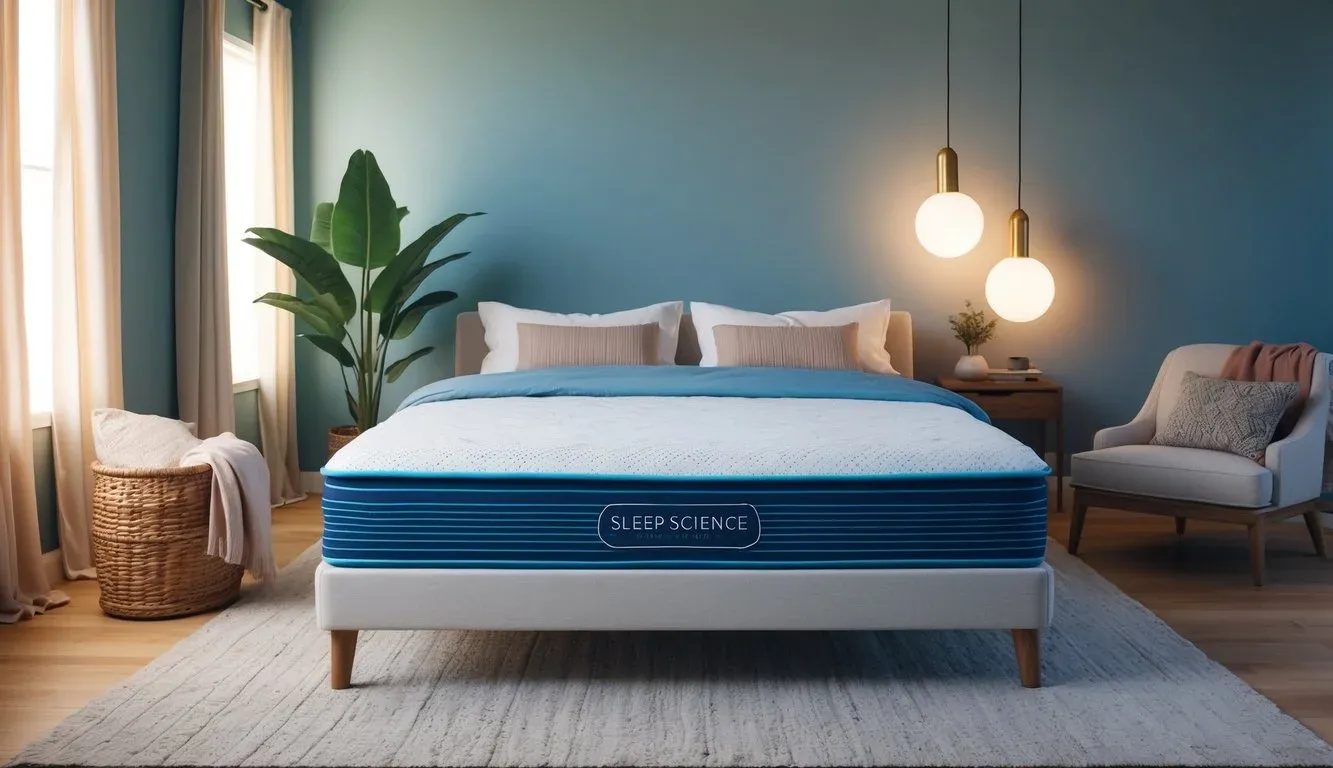
Many customers look for a mattress that fits their sleeping position and reduces back pain. Sleep Science aims to solve these problems with features like CertiPUR-US certified foam and zoned support layers. This review shares what buyers can expect from the Sleep Science mattress so they can decide if it’s the right fit.
Sleep Science Mattress Review – An Overview
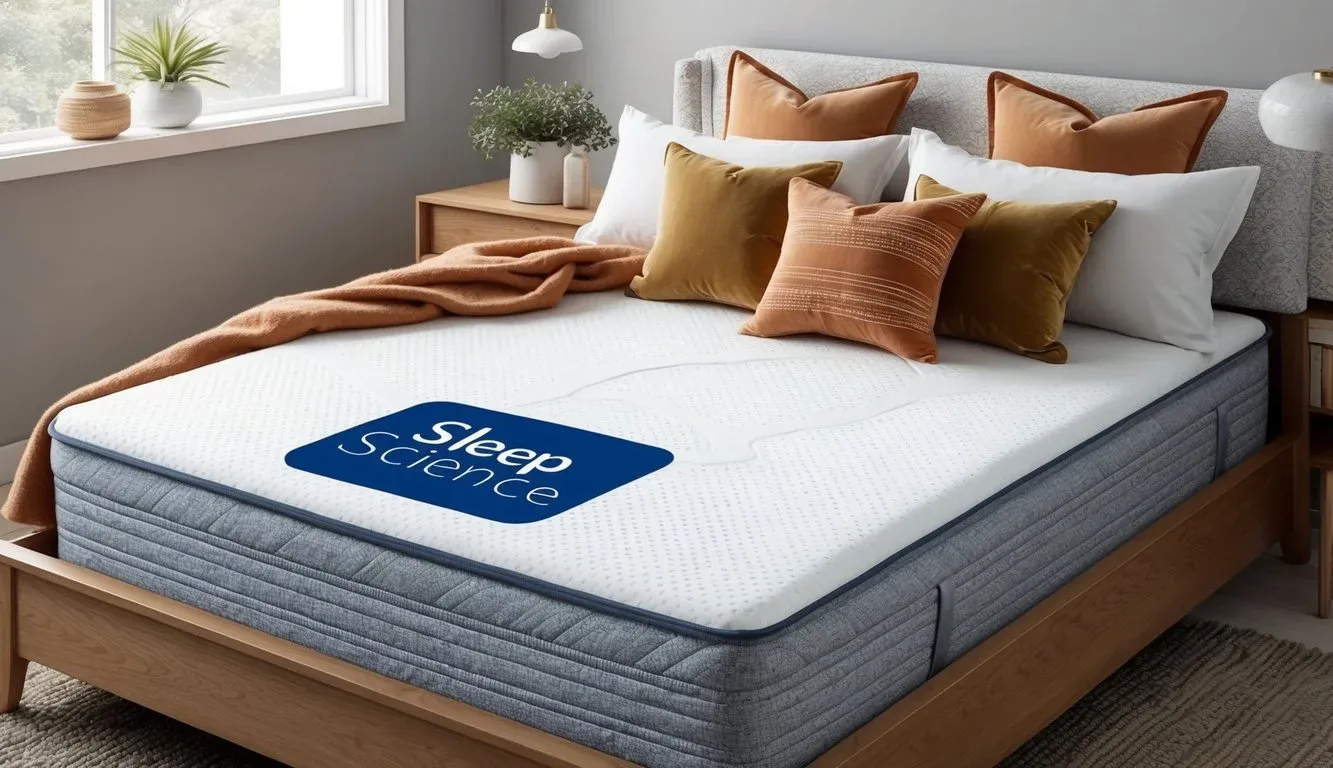
Sleep Science offers memory foam and hybrid mattresses, available mainly at Costco. Their products focus on pressure relief, support, and motion isolation, using unique foam designs and features for comfort.
Brand Background
Sleep Science is known for its direct partnership with Costco, making their mattresses easy to find in stores and online. The brand focuses on affordable pricing while maintaining important features like quality memory foam and durable support.
They offer foam-based products which often receive positive feedback for their value. Sleep Science aims to meet the needs of families, guests, and budget-conscious shoppers. Many products include long trial periods and warranties.
All Sleep Science mattresses are CertiPUR-US® certified, meaning their foams are free from certain harmful chemicals. Their mattresses are manufactured in facilities that focus on strict quality controls.
Model Lineup
Sleep Science sells a range of memory foam and hybrid mattresses in different sizes, thickness levels, and firmness ratings. Popular models include:
- Sleep Science 9″ and 10″ Memory Foam Mattresses
Best for guest rooms and light sleepers. - Sleep Science Black Diamond Series
Uses graphite and gel-infused foams for cooling. - Sleep Science iFlip
Double-sided design with two firmness options. - Hybrid Models
Combine foam layers with pocketed coils for more support.
Most models come in Twin, Full, Queen, King, and California King sizes. The typical price ranges from about $300 for smaller sizes to $1,000 or more for King sizes. Each mattress usually comes compressed in a box for easy delivery.
Key Mattress Technologies
Sleep Science mattresses use memory foam made with viscoelastic materials designed to contour to the body. Many include gel-infused foam layers, which help keep the sleeping surface cooler.
Higher-end models use advanced construction methods such as air channel foam, ventilated design, or infused graphite for better heat management. Every mattress has a multi-layer design, often combining soft comfort foam with firmer base support foam.
Some hybrids mix memory foam and coil springs to improve airflow and add bounce. Removable and washable covers are found on select models for easier cleaning. All foam materials meet CertiPUR-US® standards for content, emissions, and durability.
Construction and Materials
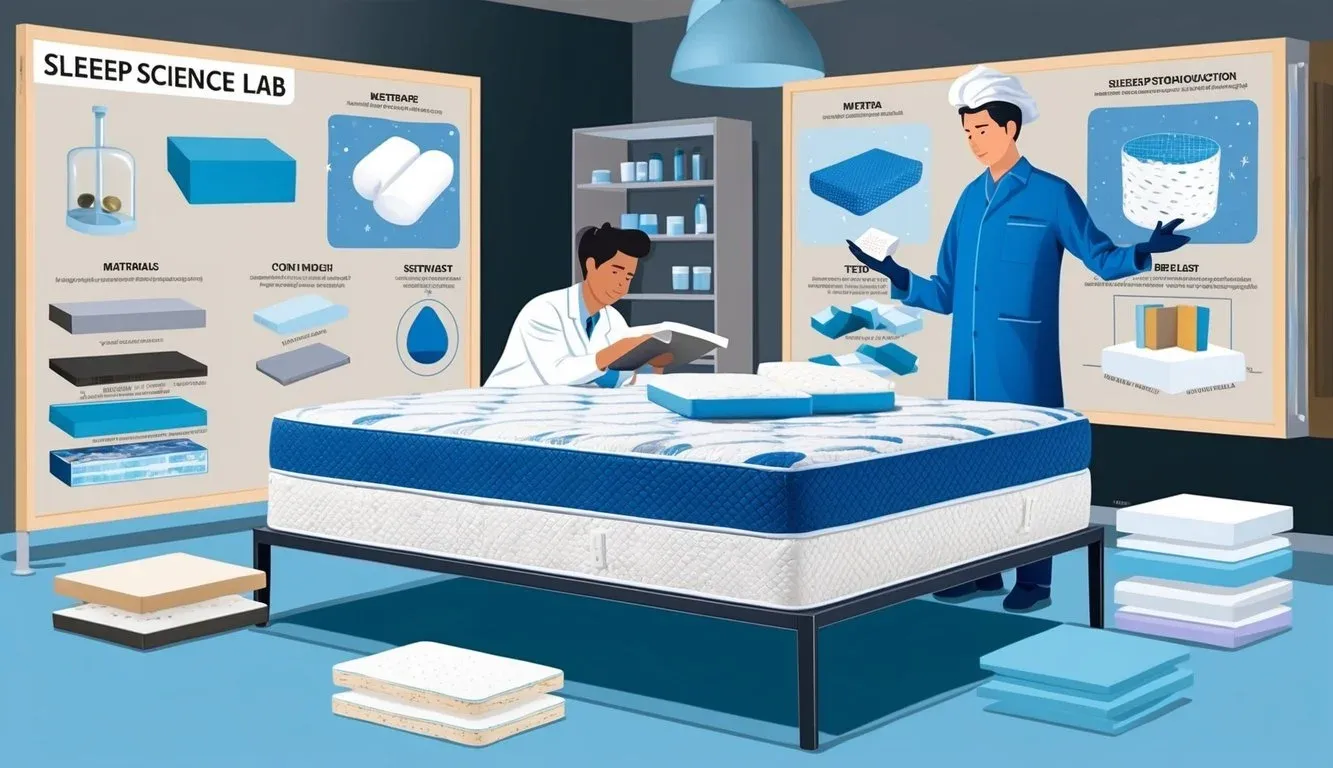
The Sleep Science mattress combines multiple layers of supportive foam, a bamboo fabric cover, and specialty materials to improve comfort. Its structure aims to help with pressure relief, temperature control, and edge support.
Foam Layers
The Sleep Science mattress uses several types of foam, each with its own job. The top layer is memory foam, which molds to the shape of the body and relieves pressure on the joints. This layer helps reduce tossing and turning during the night. Beneath the memory foam, there is often a layer of visco foam that adds extra support and helps keep the spine in line.
A transition foam layer can be found in between, making the change from soft top layers to the firmer base smooth. The bottom layer is a high-density foam, providing a solid and stable foundation to keep the mattress from sagging. Each foam section is made to last and prevent the mattress from wearing out quickly.
Foam Layer Table
| Layer | Material | Function |
|---|---|---|
| Top | Memory Foam | Pressure relief, comfort |
| Middle | Visco Foam | Support, contouring |
| Transition/Base | High-Density | Foundation, long-term durability |
Each layer has a specific thickness to balance softness with support.
Bamboo Fabric
The top cover of the Sleep Science mattress is made from bamboo fabric. Bamboo fibers are soft to the touch and are known for their breathability. This helps the mattress stay cool and fresh at night. The fabric is also moisture-wicking, which means it pulls sweat away from the body to keep sleepers dry.
Bamboo fabric is resistant to dust mites and allergens, making it a good option for people who have allergies. The natural fibers also allow more air to flow, which can be helpful for people who tend to sleep hot. The bamboo cover is tightly woven to add strength but still feels gentle against the skin.
Many users also like that bamboo is a sustainable material because it grows quickly and needs fewer pesticides.
Edge Support System
Sleep Science mattresses include edge support to keep the mattress surface firm all the way to the sides. This feature uses denser foam along the edges to prevent the mattress from sinking when people sit or lie near the edge. Strong edge support is important for people who use the whole bed or sit on the sides often.
This system keeps sleepers from feeling like they might roll off the bed. It also helps the mattress keep its shape over time. Edge support can also add a little more usable space, especially for couples who want more room.
Some models use a reinforced foam border, while others may include additional side panels made from high-resilience foam.
Cooling Gel Features
To help with temperature control, the Sleep Science mattress often includes cooling gel within the foam layers. This gel is usually infused into the memory foam layer. Its main job is to draw heat away from the body and spread it through the mattress to keep the sleeping surface cool.
The gel works by absorbing body heat and moving it away so it does not stay trapped near the sleeper. This can help reduce night sweats and make sleeping more comfortable in warmer climates. Many people find mattresses with cooling gel feel less warm than regular memory foam models.
The cooling gel also helps the mattress stay at a steady temperature, no matter the season. In some models, the gel is added in small beads that are spaced throughout the foam for even coverage.
Comfort and Support Assessment
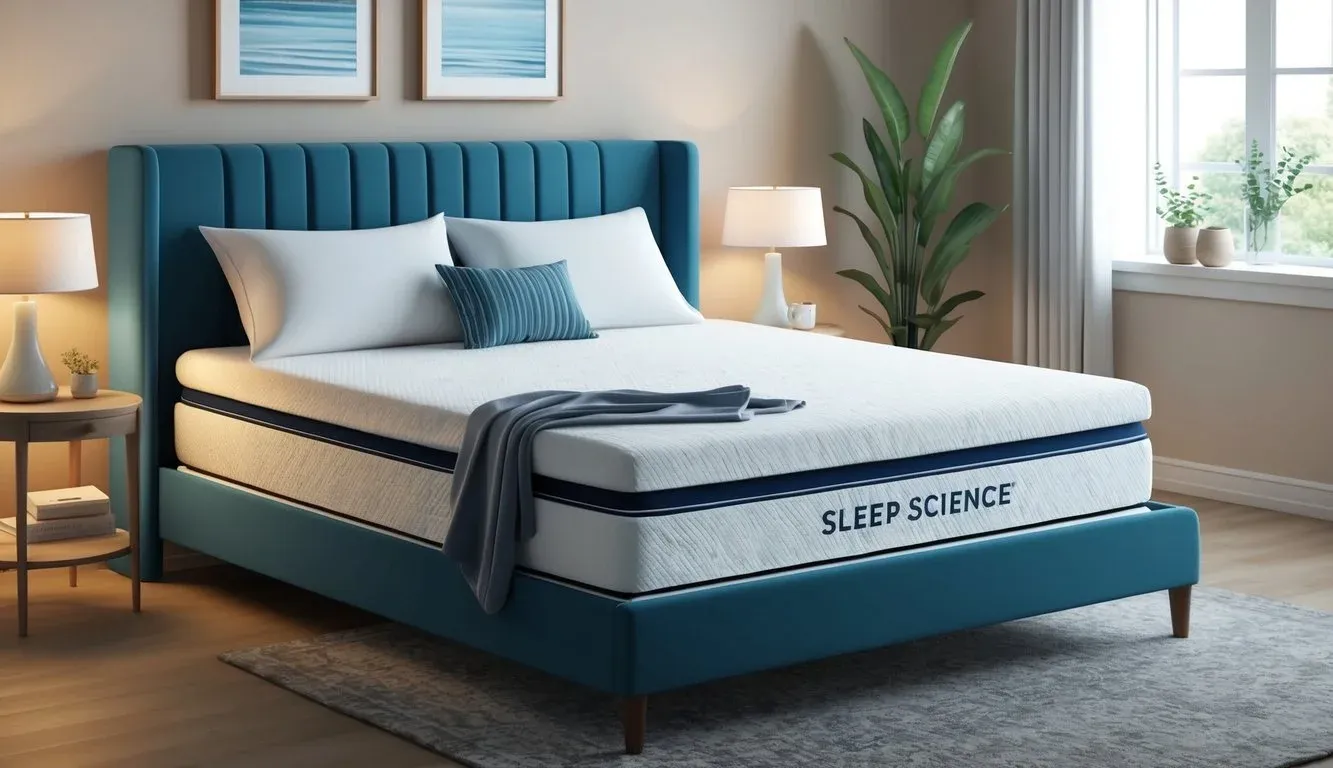
The Sleep Science mattress is designed to offer a balanced mix of cushioning and structure. Its features target the needs of people with different sleep positions, and its materials aim to ease pressure areas and deliver steady support across the entire mattress.
Firmness Levels
The Sleep Science mattress offers a medium-firm feel, rating around 6 to 7 out of 10 on the firmness scale, where 10 is the firmest. This level suits many types of sleepers:
- Back Sleepers: Most back sleepers get enough support to help keep their spine aligned.
- Side Sleepers: The top layers give enough softness to cradle shoulders and hips, but some lightweight side sleepers might want a softer option.
- Stomach Sleepers: It prevents most stomach sleepers’ hips from sinking too far, so the back stays in a better position.
The medium-firm surface helps reduce the chances of waking up with back pain. People who prefer a very plush or very hard mattress may find it less to their liking, but it is designed to appeal to most average-weight users.
Pressure Relief
The mattress uses memory foam and supportive base layers to help with pressure relief. Side sleepers notice the comfort at major pressure spots like the shoulders and hips. This can limit soreness, especially for those who sleep in the same position for long periods.
For back sleepers, the mattress creates an even surface that lowers points of stress on the lower back. Stomach sleepers get enough surface pushback to avoid the feeling of being “stuck,” yet firm enough to avoid lower back sagging.
A simple table to summarize pressure relief experience by sleep position:
| Sleep Position | Pressure Relief Experience |
|---|---|
| Back Sleeper | Good support, keeps spine straight |
| Side Sleeper | Cushions shoulders and hips, limits soreness |
| Stomach Sleeper | Enough firmness to avoid sinking |
Edge Support Performance
The Sleep Science mattress uses an edge support system with reinforced foam sides. This feature helps the edge hold shape while sitting or sleeping near it.
Edge support is especially important for couples or those who share their bed with children or pets. Users can lie or sit at the side without feeling like they will slide off. This support is stronger than in mattresses with only memory foam and brings a feeling of consistent firmness from the middle to the sides.
Lying close to the edge, both back and side sleepers still feel stable. Stomach sleepers also benefit from the sturdy edge, as it maintains the flat, even surface needed to keep the hips on top of the mattress.
Motion Isolation and Noise
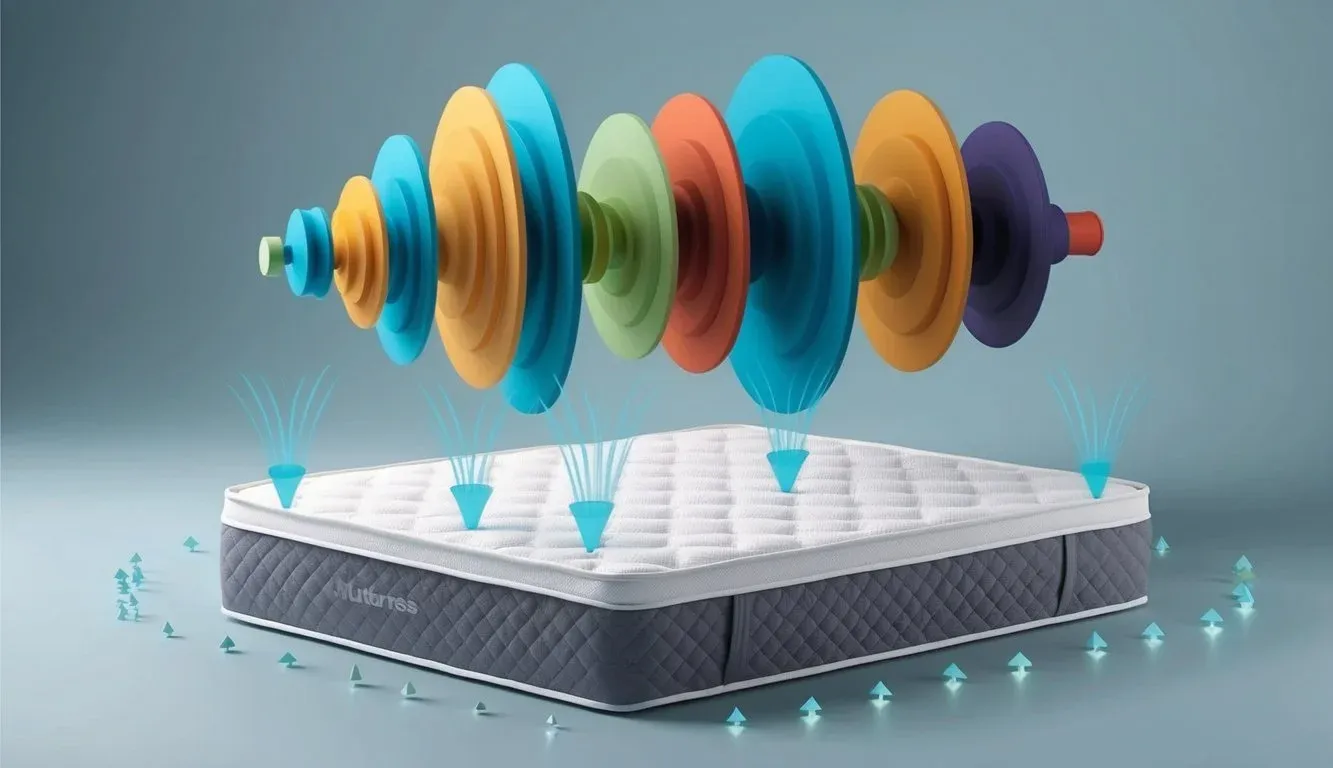
The Sleep Science mattress is designed to limit movement transfer and reduce noise. Both features can help people sleep more comfortably, especially when sharing a bed.
Motion Transfer
Motion isolation is a major benefit of the Sleep Science memory foam mattress. When one person moves or gets in and out of bed, the foam helps stop that movement from spreading across the mattress. This means partners are less likely to wake each other up at night.
In tests, memory foam layers absorb energy from shifting or rolling. The mattress does not have springs that might bounce or make movement stronger. Instead, it uses dense foam that keeps motion in one spot.
People who share a bed with a restless sleeper may notice fewer sleep disturbances. Customers often say they feel much less motion compared to a traditional innerspring mattress. Couples who are sensitive to motion frequently appreciate this feature.
Noise Level Evaluation
The Sleep Science mattress is also quiet, with almost no sound when people move. Because it is a memory foam mattress, it does not have coils or springs that creak or squeak. The materials absorb pressure without making noise.
People who toss and turn, or get up during the night, will not hear loud noises from the mattress. This can be important for light sleepers or people who do not want to disturb a partner. The mattress also stays quiet even after years of use, as the foam does not break down or become louder over time.
In reviews, users report that the Sleep Science mattress works well in reducing both noise and motion, creating a quieter and more peaceful sleeping space.
Temperature Regulation

Sleep Science mattresses are designed to help keep sleepers at a comfortable temperature throughout the night. Cooling features such as gel-infused memory foam and breathable fabrics manage heat to reduce sweating and restlessness.
Breathability
Sleep Science uses breathable materials in the cover and upper layers. Many models feature bamboo fabric, which is known for being lightweight and airy. Bamboo fabric helps move heat and moisture away from the skin, making it easier to stay cool.
The mattress core sometimes has open-cell foam. This foam lets air flow through the mattress better than traditional memory foam. More airflow means less heat gets trapped near the body.
These breathable materials and designs help prevent the mattress from feeling too warm during sleep. Sleep Science aims to reduce the chance of waking up hot and uncomfortable.
Gel Infused Features
Many Sleep Science mattresses include a cooling gel layer. This gel-infused memory foam usually sits near the top of the mattress, close to the body. The gel works by absorbing and moving away body heat to keep the surface feeling cooler.
Cooling gel also helps prevent the mattress from heating up during the night. When compared to regular memory foam, gel-infused foam keeps a lower temperature for longer periods. Some Sleep Science models offer more than one gel layer for extra cooling.
These features help make sure that the mattress does not feel too warm and help support a restful night’s sleep.
Durability and Warranty

Sleep Science mattresses use specific materials designed to last through years of use. Buyers get a limited warranty, which helps cover certain issues, but the details are important to check.
Longevity of Materials
Sleep Science mattresses are made with layers of memory foam or latex. The covers use polyester or bamboo blends for strength and comfort. These materials resist breaking down for several years when cared for well.
Edge support is usually reinforced to prevent sagging. Proper support also limits indentation in the most-used areas. A typical Sleep Science mattress can last about 7 to 10 years with regular use.
For best results, owners are advised to rotate the mattress every few months. This step helps keep the surface even and extends the lifespan. It’s important to avoid getting the mattress wet, as moisture can harm the foam and cause early wear.
Limited Warranty Coverage
Sleep Science provides a limited warranty that usually lasts 10 or 20 years, depending on the model. This warranty covers defects such as deep sagging (usually over 1.5 inches), broken zippers, or splits in the foam.
Owners must follow care instructions and use the right support base—otherwise, claims may be declined. The warranty does not cover normal softening, small body impressions, stains, or damage from misuse.
To use the warranty, buyers often need to show proof of purchase and describe the issue clearly. Warranty coverage is typically not transferable, so only the original owner is protected. Reading all warranty details before buying helps avoid surprises if a problem comes up.
Comparison With Competing Brands

Sleep Science mattresses use memory foam and come in several firmness options. Performance, price, and comfort are key areas where differences appear among brands.
Sleep Science vs Tempurpedic
Sleep Science and Tempurpedic both use memory foam, but their foam types and construction vary. Tempurpedic uses a proprietary TEMPUR material that feels dense and responsive. Sleep Science uses CertiPUR-US certified foam, which focuses on lower VOCs and fewer added chemicals.
Tempurpedic mattresses tend to be firmer and may better support heavier sleepers. Sleep Science offers a mix of medium and firm feels, suitable for many sleeping positions.
In terms of pricing, Sleep Science is more affordable, with Queen sizes often under $1,000. Tempurpedic usually costs at least twice as much for similar sizes and thickness. Both brands offer removable covers and at least a 10-year warranty.
Key Differences Table:
| Feature | Sleep Science | Tempurpedic |
|---|---|---|
| Foam Type | CertiPUR-US Memory Foam | TEMPUR Proprietary Foam |
| Price Range | Lower | Higher |
| Firmness | Medium-Firm | Medium, Firm (Varies) |
| Warranty | 10 years | 10 years (or more on some models) |
Sleep Science vs Other Memory Foam Mattresses
Compared to other memory foam mattresses in a similar price range—like Zinus, Lucid, or Nectar—Sleep Science stands out for its use of latex blends in some models and solid foam edge support. Support and durability are generally above average for Sleep Science, while many budget foam mattresses sag sooner.
Sleep Science mattresses often use layered foam for better airflow, which helps reduce overheating at night. Many brands in the budget memory foam category have fewer cooling features.
Warranty is also a strong point; while some budget brands offer 5 years or less, Sleep Science provides a 10-year warranty. Sleep Science also has limited motion transfer, which is good for couples.
Comparison List:
- More edge support than Zinus and Lucid
- Longer warranty than Zinus (5 years) or Lucid (3 years)
- Breathable foam layers for cooling
- Price is similar or a bit higher, but with more features
Buying Experience
Sleep Science mattresses are sold at Costco both in stores and online. Buyers often mention easy ordering, quick delivery, and a flexible return policy.
Costco Purchase Process
Customers can buy Sleep Science mattresses directly at their local Costco or from the Costco website. Shopping online is usually simple, with clear product details and multiple sizes available. Shoppers can compare mattress models and see reviews before purchasing.
Costco requires a membership to purchase, which costs an annual fee. Payment can be made by credit card or debit card. When buying online, the checkout process is straightforward and confirms the order with email updates.
Buyers also have the option to add setup or haul-away services for an extra charge. Store pickup is not usually available for these large items.
Delivery and Setup
Costco offers free standard shipping for most Sleep Science mattresses. Delivery time typically ranges from 5 to 10 business days, depending on location and stock levels. Mattresses are delivered compressed and rolled in a box for easier handling.
For a fee, Costco provides a “White Glove Delivery” service. This service includes room placement, setup, and removal of packing materials. Customers can schedule delivery at a convenient time.
Setup is generally quick. Most people let the mattress sit for a few hours to fully expand before using it. Old mattress removal may also be included if selected during checkout.
Costco Return Policy
Costco’s return policy is known for its leniency. Sleep Science mattresses can be returned for a full refund at any time if the customer is unsatisfied. There are no restocking fees.
To start a return, customers can take the mattress to a local warehouse or call Costco’s customer service for home pickup. Many people consider this policy one of the main benefits of buying from Costco.
Refunds are processed quickly once the mattress is returned. Proof of purchase is usually required, but Costco keeps detailed records for members, so receipts may not be necessary.
Accessories and Additional Products
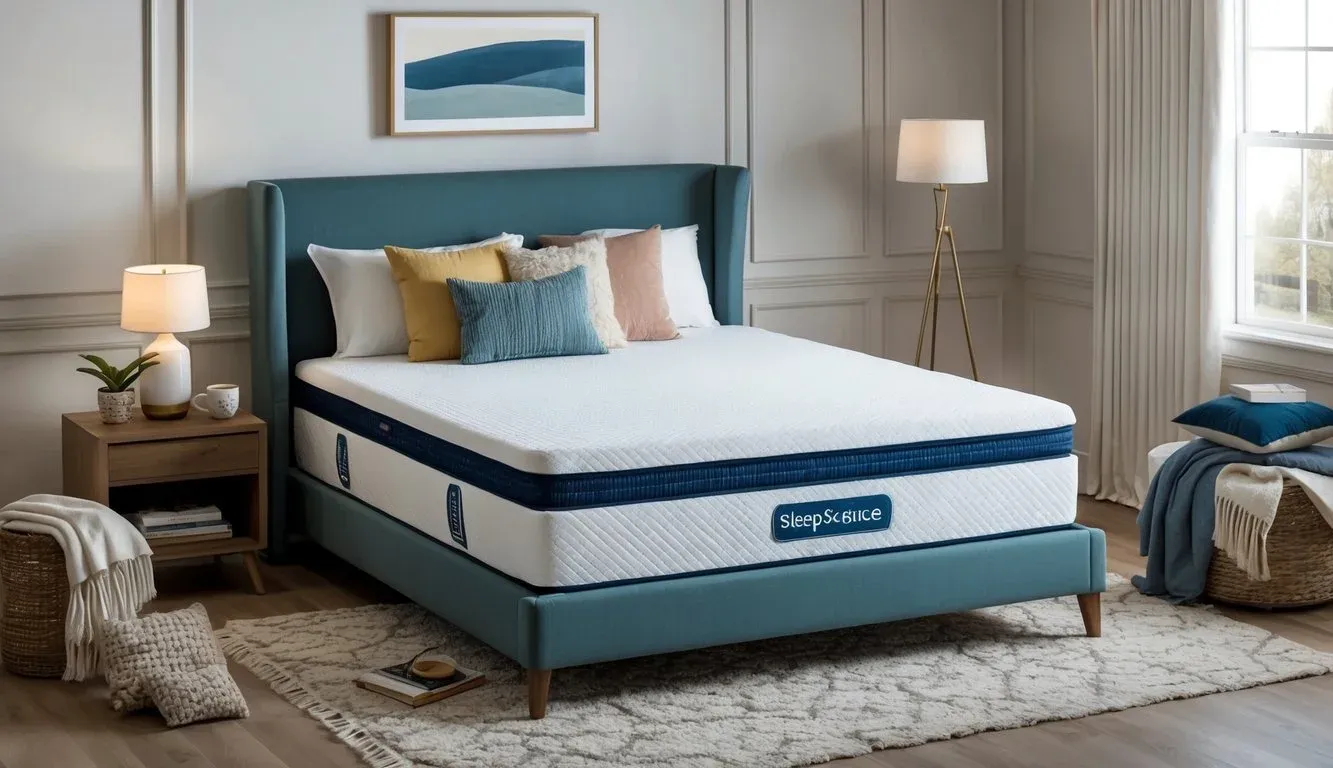
Sleep Science offers several accessories that improve sleep quality and help mattresses last longer. Some items focus on comfort, while others add digital features or protection.
Pillow Top Mattress
The Sleep Science pillow top mattress adds an extra layer of cushioning on the surface. This soft top uses memory foam or plush fabrics to give a more comfortable feel compared to standard mattresses. It’s designed for people who prefer a softer surface and want some pressure relief around the shoulders and hips.
The pillow top is sewn directly onto the mattress. This design keeps it from slipping or shifting during sleep. Some pillow top models include cooling gel or special fibers to help keep the body temperature steady through the night.
Key features:
- Extra cushioning made of memory foam or plush fibers
- Sewn-on top that does not move
- Options for cooling materials
People who like a soft bed or need more comfort may find a pillow top mattress a good fit.
Mattress Pad Options
Mattress pads from Sleep Science provide an added layer of comfort and protection. These pads shield the mattress from stains, spills, and dust mites. Some come with waterproof backing, which is helpful for kids or pets at home.
Many pads are made with breathable cotton or polyester tops. This helps air move and keeps sleepers from getting too hot at night. Mattress pads come in different thicknesses and softness, so users can choose what they need.
They attach easily to the bed. Most have elastic straps or fitted corners to keep them in place. Pads are usually machine-washable, making care easy.
Popular options include:
- Waterproof pads
- Hypoallergenic covers
- Cooling mattress pads
Sleep Apps
Sleep Science also offers digital tools such as sleep apps that work with their mattresses. These apps can track sleep patterns by connecting to sensors under the mattress or on the bed frame.
Users can view sleep quality, movement through the night, and time spent in each sleep stage. The app provides daily and weekly reports with suggestions for better rest. Some apps also let people control adjustable bed features, like head or foot elevation, using their smartphones.
Features of Sleep Science apps:
- Sleep tracking and quality reports
- Tips for improving sleep
- Remote control for adjustable mattresses
These apps are especially useful for those who want to understand or improve their sleep habits.
User Experience and Customer Feedback
Most buyers mention the support, comfort, and value of the Sleep Science mattress. Opinions are often shaped by both personal comfort needs and after-sales service.
Reviews and Ratings
Sleep Science mattresses usually receive solid ratings on popular retail sites. On average, buyers rate them between 4.2 and 4.6 out of 5 stars.
Many reviewers talk about their experiences after several months of use. They often describe the memory foam as conforming but not too soft. Reviews on Yahoo Shopping, for example, highlight the mattress helping with back and joint pain.
Some tables and review aggregators compare Sleep Science with other brands, emphasizing its value for the price. The brand’s return policy, delivery times, and customer service also get mentioned in star ratings.
Common Praise and Complaints
Customers often praise motion isolation, pressure relief, and low odor when first opening the mattress. Couples like that movement does not transfer easily across the bed. The cooling features, such as gel-infused foam, also receive positive comments.
Complaints typically focus on firmness. Some find the mattress too firm or too soft, depending on personal preference. A few buyers mention it can take extra time for the mattress to fully expand.
Long-term durability is sometimes questioned in reviews, especially with heavier sleepers. Return consent and warranty issues also arise, with some users experiencing delays during exchanges or refunds.
Yahoo Recommendations
Yahoo editors and users highlight Sleep Science for its reasonable pricing and consistent comfort. Their reviews often note the simplicity of setup and clear delivery updates.
Yahoo’s top recommendations include the Sleep Science 8” and 10” memory foam mattresses. They suggest these models for side sleepers or anyone wanting good pressure relief without spending too much.
Yahoo Buying Guides mention that reading the consent terms for returns is important before purchasing. They also rate the 90-night trial as a key feature for those uncertain about which comfort level to choose.
Is Sleep Science Mattress Right for You?
Sleep Science mattresses offer different firmness levels and features for many types of sleepers. Pricing varies with options like Costco bundles, while comfort and support are shaped by sleep position and personal needs.
Ideal Sleep Positions
Sleep Science makes several mattress models suited for side, back, and stomach sleepers. Side sleepers often prefer a medium or plush option for better pressure relief at the shoulders and hips. Some Sleep Science mattresses use memory foam layers designed to contour and reduce pressure in these areas.
Back sleepers tend to need a firmer, more supportive surface to keep the spine aligned. Many Sleep Science models are rated medium-firm, which can prevent lower back sagging for this sleep style. Stomach sleepers require even firmer support to avoid sinking at the hips, helping to reduce strain on the back. It is important to check the firmness level before buying, as some models are softer than others.
Sleep Position Guide Table:
| Sleep Position | Recommended Firmness | Popular Sleep Science Models |
|---|---|---|
| Side | Medium/Soft | Black Diamond, Ara, 9″ Memory Foam |
| Back | Medium-Firm | Ara, Copper Infused 11″, 10″ Gel |
| Stomach | Firm | Copper Infused 11″, Carina |
Budget Considerations
Sleep Science mattresses can be found at a range of price points. Entry-level memory foam models are usually less expensive, while advanced hybrids or models with cooling technology cost more. Some buyers choose Sleep Science through Costco, which often provides bundle deals and extended warranties.
Buying from Costco may also allow returns within a generous time frame, which adds value. Shoppers on a strict budget might select a thinner model or wait for promotions. Price is strongly tied to mattress thickness, size, and features like gel or copper infusions. It helps to compare both the initial purchase price and any added costs for delivery or setup.
Budget Tip:
- Compare prices at Costco and other authorized retailers.
- Review included warranty and return policies.
- Watch for periodic promotions, especially around major holidays.
Back Pain Considerations
Sleep Science mattresses focus on support and spinal alignment, which can help some people with back pain. Their memory foam and hybrid options aim to keep the body in a neutral position. Firmer models may suit those with lower back pain, especially back and stomach sleepers.
Mattresses with zoned support or targeted firmness offer extra reinforcement at the lumbar area. Some buyers report reduced soreness after switching to a medium-firm or firm Sleep Science model. Side sleepers with back pain might select a version with softer upper layers and stable support below.
Key features for back pain:
- Memory foam layers for contouring
- Zoned or targeted lumbar support
- Medium-firm or firm options for added stability
Not everyone will get relief, but many reviews mention improved sleep quality after using a model that fits their support needs. Always check firmness ratings and warranty coverage before making a purchase.
Frequently Asked Questions
Sleep Science mattresses get mixed feedback. Reports focus on comfort, durability, and unique features like copper and bamboo materials.
What are the common complaints about Sleep Science mattresses?
Some users say Sleep Science mattresses are too firm or too soft for their liking. A few people mention issues with sagging over time. There are reports of off-gassing odors when first opened.
How do consumer reports rate Sleep Science mattresses?
Consumer reports often rate Sleep Science mattresses as good for value and support. Many models receive average to above-average scores for motion isolation and comfort. Pressure relief and durability ratings vary, depending on the specific model.
Can Sleep Science mattresses be flipped or are they one-sided?
Most Sleep Science mattresses are one-sided. They are designed to be used only with the top side up. Flipping them is not recommended, but rotating the mattress can help wear evenly.
What is the warranty period for a Sleep Science mattress?
Most Sleep Science mattresses come with a 10-year limited warranty. This covers manufacturing defects and certain other issues, but not normal wear or physical damage. It’s important to check the warranty details for each model.
Are there specific benefits of the Sleep Science Copper infused mattress?
The copper infused mattress is made to feel cooler and help keep away heat. Copper is also added for possible antimicrobial properties, which may help keep the bed cleaner over time.
What do reviews say about the Sleep Science 13′ Bamboo Cool firm mattress?
Many reviews mention good support and firmness, which some back and stomach sleepers like. People also note the bamboo material feels cool and soft. However, some side sleepers say the mattress is not soft enough for their needs.